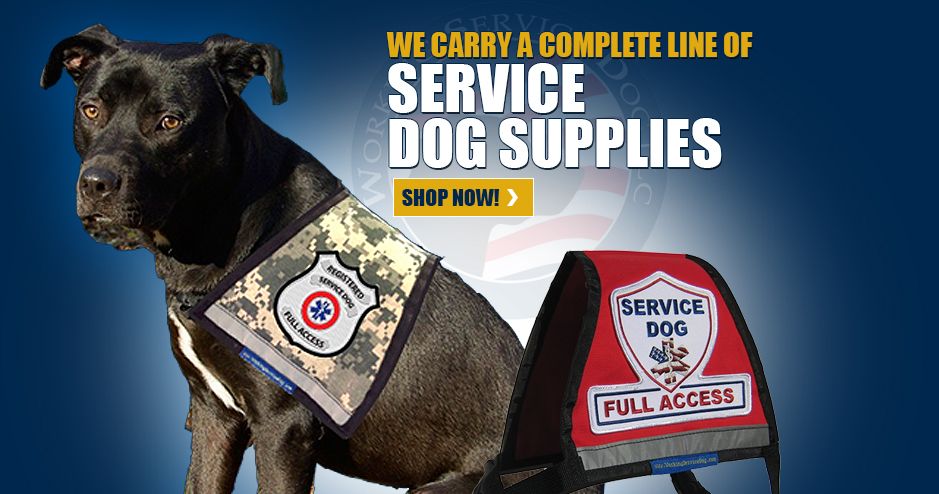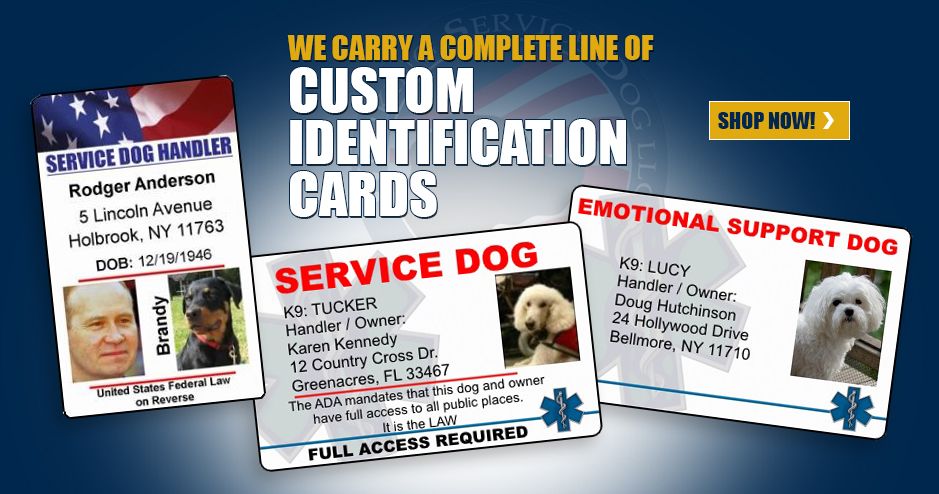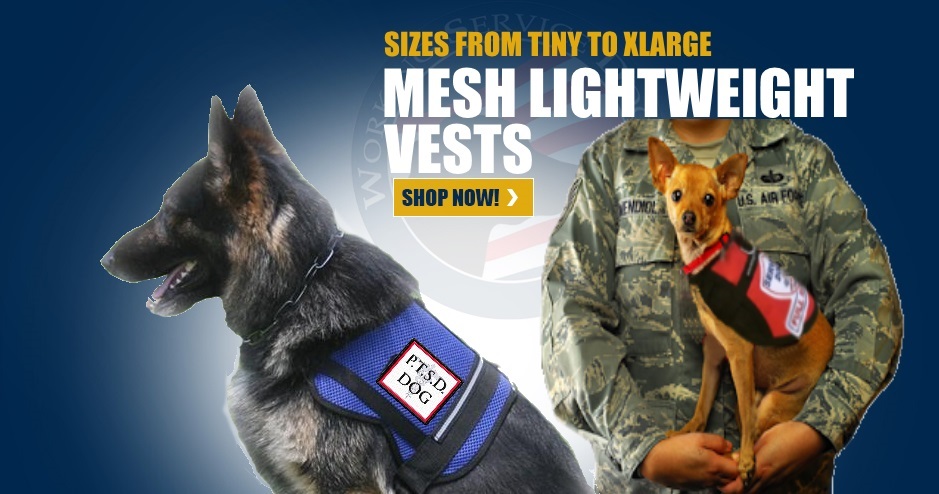SERVICE DOGS INFORMATION & FACTS
According to the Americans with Disabilities Act (ADA), a service animal must be trained to do
specific work or perform certain tasks which benefit a disabled person in order to be legally be
considered a service dog. The disabilities to consider vary greatly, as do the tasks that the service
dog performs. Some qualifying disabilities include, but are not limited to, allergy alert, deafness
or partial deafness, epilepsy, blindness, mobility assist and general medical alert. It is these
specially trained tasks that legally exempts a service dog and the disabled handler from the “No
Pets Allowed” policies of stores, housing, malls, restaurants, hotels/resorts, airlines, cruises, taxis
buses and many other public places. Service Dogs can be any size or breed. Service animals do
not have to be professionally trained, they can be trained by their owner or handler. Though the
ADA simply requires verbal assurance that your dog is in fact a Service Dog, it may help to have
additional identification in case someone asks about your Service Dogs’ legal status.
IDENTIFYING SERVICE DOGS FOR THE PUBLIC
Service animals are most often identified by wearing a Service Dog Vest, service dog harness or
identification tag. These identification products help the public and other establishments
understand that it is not a pet, but a Service Dog. Although the ADA is clear that nothing more
than verbal assurance is required to be accompanied by your Service Dog, many establishments
may request to see a Service Dog Certificate or other forms of identification that indicates that
the dog is a working dog. Using our stores’ website WorkingServiceDog.com, you can choose
patches, ID Cards and Service Dog Tags to assist in identifying your Service Dog.





